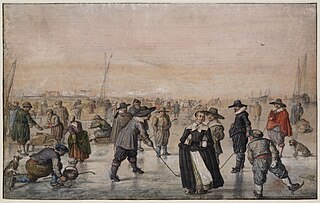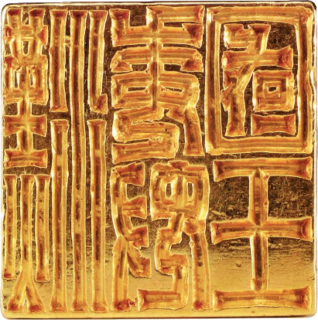Related Research Articles

The influence and imperialism of Western Europe and associated states peaked in Asian territories from the colonial period beginning in the 16th century and substantially reducing with 20th century decolonization. It originated in the 15th-century search for trade routes to the Indian subcontinent and Southeast Asia that led directly to the Age of Discovery, and additionally the introduction of early modern warfare into what Europeans first called the East Indies and later the Far East. By the early 16th century, the Age of Sail greatly expanded Western European influence and development of the spice trade under colonialism. European-style colonial empires and imperialism operated in Asia throughout six centuries of colonialism, formally ending with the independence of the Portuguese Empire's last colony East Timor in 2002. The empires introduced Western concepts of nation and the multinational state. This article attempts to outline the consequent development of the Western concept of the nation state.

The Qing dynasty, officially the Great Qing, was the Manchu-led last dynasty in the imperial history of China. It was proclaimed in 1636 in Manchuria, in 1644 entered Beijing, extended its rule to cover all of China proper, and then extended the empire into Inner Asia. The dynasty lasted until 1912. In orthodox Chinese historiography, the Qing dynasty was preceded by the Ming dynasty and succeeded by the Republic of China. The multiethnic Qing empire lasted for almost three centuries and assembled the territorial base for modern China. It was the largest Chinese dynasty and in 1790 the fourth-largest empire in world history in terms of territorial size. With a population of 432 million in 1912, it was the world's most populous country at the time.

The 16th century begins with the Julian year 1501 (MDI) and ends with either the Julian or the Gregorian year 1600 (MDC).

The 17th century lasted from January 1, 1601 (MDCI), to December 31, 1700 (MDCC). It falls into the early modern period of Europe and in that continent was characterized by the Baroque cultural movement, the latter part of the Spanish Golden Age, the Dutch Golden Age, the French Grand Siècle dominated by Louis XIV, the Scientific Revolution, the world's first public company and megacorporation known as the Dutch East India Company, and according to some historians, the General Crisis.

The History of East Asia generally encompasses the histories of China, Korea, Japan, and Mongolia from prehistoric times to the present. East Asia is not a uniform term and each of its countries has a different national history, but scholars maintain that the region is also characterized by a distinct pattern of historical development. This is evident in the interrelationship among East Asian countries, which not only involve the sum total of historical patterns but also a specific set of patterns that has affected all or most of East Asia in successive layers. It is also argued that East Asia and Southeast Asia form a single ethno-cultural unit, sharing history and common ethnic roots.

The Treaty of Shimonoseki, also known as Treaty of Maguan in China and Treaty of Bakan in the period before and during WWII in Japan, was a treaty signed at the Shunpanrō hotel (春帆樓), Shimonoseki, Japan on April 17, 1895, between the Empire of Japan and Qing China, ending the First Sino-Japanese War. The peace conference took place from March 20 to April 17, 1895. This treaty followed and superseded the Sino-Japanese Friendship and Trade Treaty of 1871.

In historical contexts, New Imperialism characterizes a period of colonial expansion by European powers, the United States, and Japan during the late 19th and early 20th centuries. The period featured an unprecedented pursuit of overseas territorial acquisitions. At the time, states focused on building their empires with new technological advances and developments, expanding their territory through conquest, and exploiting the resources of the subjugated countries. During the era of New Imperialism, the Western powers individually conquered almost all of Africa and parts of Asia. The new wave of imperialism reflected ongoing rivalries among the great powers, the economic desire for new resources and markets, and a "civilizing mission" ethos. Many of the colonies established during this era gained independence during the era of decolonization that followed World War II.

The Opium Wars were two wars waged between the Qing dynasty and Western powers in the mid-19th century. The First Opium War, fought in 1839–1842 between Qing China and the United Kingdom, was a conflict triggered by the dynasty's campaign to enforce its prohibition of opium against British and American merchants who sold opium produced in India and Turkey. The Second Opium War was fought between the Qing and the United Kingdom and France, 1856–1860. In each war, the European force's modern military technology led to easy victory over the Qing forces, with the consequence that the Qing government was compelled to grant favourable tariffs, trade concessions, reparations and territory to the Europeans.

The Twenty-One Demands was a set of demands made during the First World War by the Empire of Japan under Prime Minister Ōkuma Shigenobu to the government of the Republic of China on 18 January 1915. The secret demands would greatly extend Japanese control of China. Japan would keep the former German areas it had conquered at the start of World War I in 1914. It would be strong in Manchuria and South Mongolia. It would have an expanded role in railways. The most extreme demands would give Japan a decisive voice in finance, policing, and government affairs. The last part would make China in effect a protectorate of Japan, and thereby reduce Western influence. Japan was in a strong position, as the Western powers were in a stalemated world war with Germany. Britain and Japan had a military alliance since 1902, and in 1914 London had asked Tokyo to enter the war. Beijing published the secret demands and appealed to Washington and London. They were sympathetic and forced Tokyo to drop section 5. In the final 1916 settlement, Japan gave up its fifth set of demands. It gained a little in China, but lost a great deal of prestige and trust in Britain and the U.S.

The Tripartite Intervention or Triple Intervention was a diplomatic intervention by Russia, Germany, and France on 23 April 1895 over the harsh terms of the Treaty of Shimonoseki imposed by Japan on the Qing dynasty of China that ended the First Sino-Japanese War. The goal was to stop Japanese expansion in China. The Japanese reaction against the Triple Intervention was one of the causes of the subsequent Russo-Japanese War.
Unequal treaty is the name given by the Chinese to a series of treaties signed during the 19th and early 20th centuries, between China and various European powers, such as the British Empire, France, the German Empire, and the Russian Empire, as well as Japan and the United States. The agreements, often reached after a military defeat, contained one-sided terms, requiring China to cede land, pay reparations, open treaty ports, or grant extraterritorial privileges to foreign citizens.
The foreign relations of Imperial China from the Qin dynasty until the Qing dynasty encompassed many situations as the fortunes of dynasties rose and fell. Chinese culture had influenced neighboring and distant countries, while being transformed by outside influences as well as being conquered. During the Western Han dynasty, the Silk Road trade routes were established and brought Hellenistic Central Asia, Persia under the Parthian Empire, and South Asia into contact with the Chinese empire. During the 2nd century BC, Zhang Qian became the first known Chinese diplomat to venture deep into Central Asia in search of allies against the Mongolic Xiongnu confederation. Han Chinese attempts were made at reaching the Roman Empire and although the mission led by Gan Ying in 97 AD was a failure, Chinese historical records nevertheless maintain that the Romans traveled to southern China and Vietnam via the Indian Ocean. Buddhism from India was introduced to China during the Eastern Han period and would spread to neighboring Vietnam, Korea, and Japan, all of which would adopt similar Confucian cultures based on the Chinese model.
The early modern period of modern history follows the late Middle Ages of the post-classical era. Although the chronological limits of this period are open to debate, the timeframe spans the period after the late post-classical or Middle Ages through the beginning of the Age of Revolutions. It is variously demarcated by historians as beginning with the Ottoman conquest of Constantinople in 1453, the Renaissance period in Europe and Timurid Central Asia, the Muslim conquests in the Indian subcontinent, the end of the Crusades, the Age of Discovery, and ending around the French Revolution in 1789, or Napoleon's rise to power.
This article is concerned with the events that preceded World War II in Asia.
The Treaty of Saint Petersburg (1881), also known as Treaty of Ili, was a treaty between the Russian Empire and the Qing dynasty that was signed in Saint Petersburg, Russia, on 24 February [O.S. 12 February] 1881. It provided for the return to China of the eastern part of the Ili Basin region, also known as Zhetysu, which had been occupied by Russia since 1871 during the Dungan Revolt.

Mitch Anderson is a Romanian-born American film director, producer, writer, researcher and editor. He is the only son of former political dissidents of the Stalinist era. His first film, The World Without US, explores what might happen if the United States were to leave the international arena, rescind its global reach and return to being a non-interventionist nation. His second film, China's Century of Humiliation, examines how both Chinese and Western societies evolved based on their Confucian and Christian ideologies, respectively. His third documentary, The Men Who Lost China, explores how China's current foreign policy can be traced back to US involvement in the 1911 Chinese Revolution and the Western attitude to China after the First World War.

The "century of humiliation", also known as the "hundred years of national humiliation", is a term used in China to describe the period of intervention and subjugation of the Qing dynasty and the Republic of China by Western powers and Japan from 1839 to 1949.

Military history is a humanities discipline within the scope of general historical recording of armed conflict in the history of humanity, and its impact on the societies, cultures and economies thereof, as well as the resulting changes to local and international relationships.

The history of China–Japan relations share a long history dating back thousands of years through trade, cultural exchanges, friendships, and conflicts. Japan has deep historical and cultural ties with China; cultural contacts throughout its history has strongly influenced the nation – including its writing system architecture, cuisine, culture, literature, religion, philosophy, and law.

The Gate of Worlds is an alternate history novel by American writer Robert Silverberg. It was first published by Holt, Rinehart & Winston in the United States in 1967. The first UK hardcover edition was published by Gollancz in 1978.
References
- ↑ Amazon.com (31 January 2012). "Amazon Entry for China's Century of Humiliation".
- ↑ "About the China's Century of Humiliation".